Top 10 Fast Growing Trees for Your Yard
Updated: Mar. 07, 2024
Plant these fast growing trees for beauty, shade and wildlife benefits. You'll be rewarded with good looks and quick results.
Do you love mature landscapes, but not the wait it takes to get there? Don’t worry—there are plenty of great fast-growing trees to choose from. You need to be a bit careful when it comes to this type of tree, because quick growth often leads to weak wood and a short life. However, choose wisely and you’ll be rewarded with both speedy results and long-lasting beauty.
Check out 15 trees you should never grow in your yard.
On This Page
Zelkova
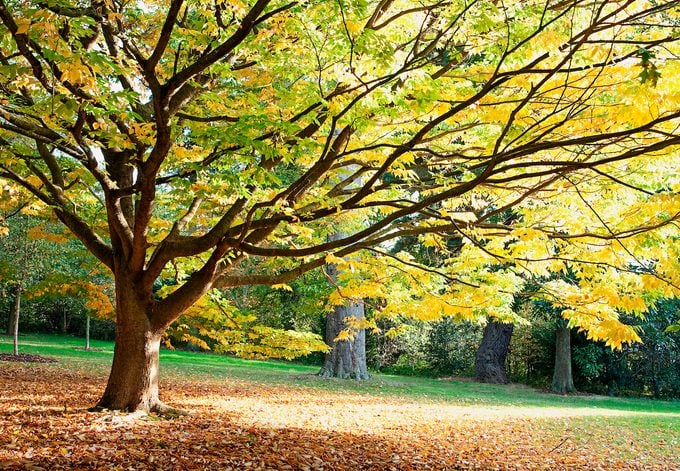
Zelkova serrata, Zones 5 to 8
Size: 50 to 60 feet
The vase-shaped growth habit may remind you of an elm, but the smooth gray bark and lovely red to purple fall color will take you by surprise. These adaptable fast growing trees tolerate a wide range of conditions, including wind and drought, once established.
Why we love it: Zelkova, a member of the elm family, is relatively resistant to the deadly Dutch elm disease.
Learn how to grow an Eastern red cedar tree.
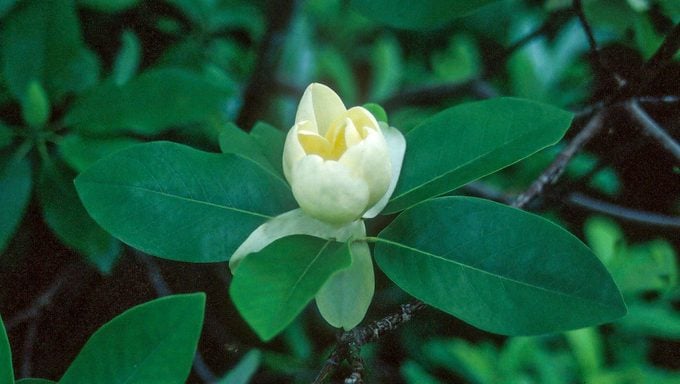
Sweet Bay Magnolia
Magnolia virginiana, Zones 5 to 9
Size: 10 to 20 feet in the north and 60 feet in the south
Lemon-scented flowers, dark green leaves and its evergreen nature in southern gardens make this a good patio or specimen plant. Watch as the wind rustles the leaves exposing their silvery undersides. Provide proper care for quicker growth.
Why we love it: It’s more tolerant of shade and wet areas than other magnolias.
Check out the top 10 small flowering trees for your yard.
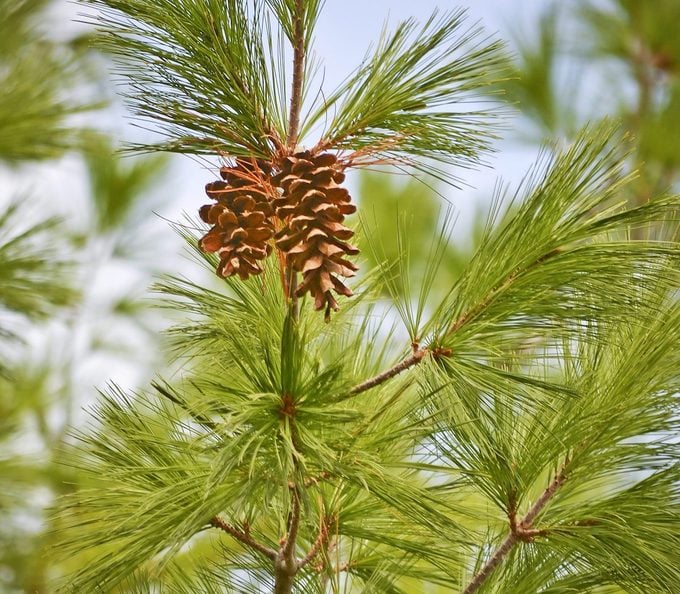
White Pine
Pinus strobus, Zones 3 to 7
Size: 50 to 80 feet
Pyramidal in youth and picturesque with age makes this a delightful evergreen tree throughout its lifetime. Some gardeners shear it into hedges while others give it room to grow into an elegant specimen. Avoid high winds, air pollution and salt to extend its lifespan.
Why we love it: The many cultivars include upright, contorted and dwarf forms, and there is one suited to just about any landscape.
Disover fascinating facts about fir trees.
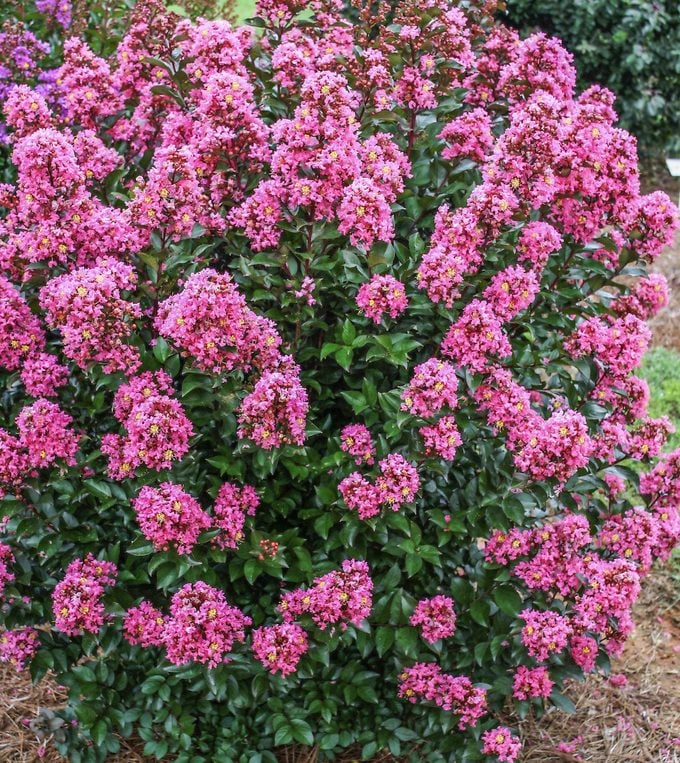
Crape Myrtle
Lagerstroemia indica, Zones 7 to 9
Size: 15 to 25 feet
There is a reason crape myrtles fill southern yards. The exfoliating bark exposes shades of brown and gray, adding year-round interest to any space. A long season of white, pink, purple or deep red blooms and outstanding fall color add beauty to every season in your landscape.
Why we love it: This nimble quick growing tree is beautiful alone, in small groups or added to the mixed border.
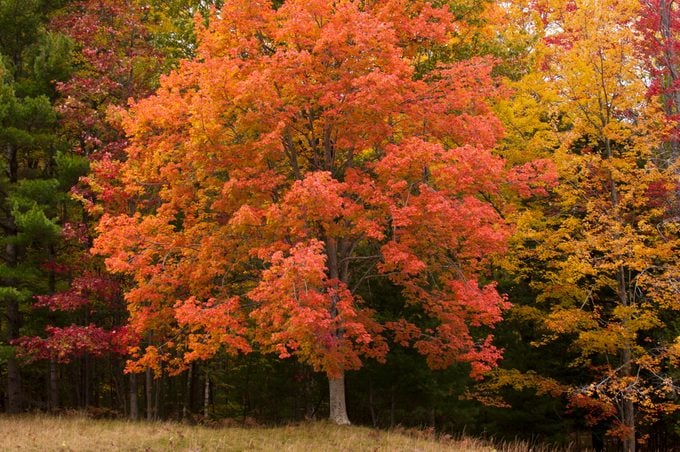
Red Maple
Acer rubrum, Zones 3 to 9
Size: 40 to 60 feet
This native tree’s red flower buds and blooms add subtle color to the early spring landscape. They finish off the season when the green leaves turn a brilliant red in fall. Select a cultivar with good branch structure and reliable fall color such as Red Sunset or Northwoods.
Why we love it: Acidic soil is a must, but the hybrid Freeman maple (red maple crossed with silver) has both the red maple’s fall color and the silver maple’s alkaline soil tolerance.
Grow a dogwood tree for beauty and the birds.
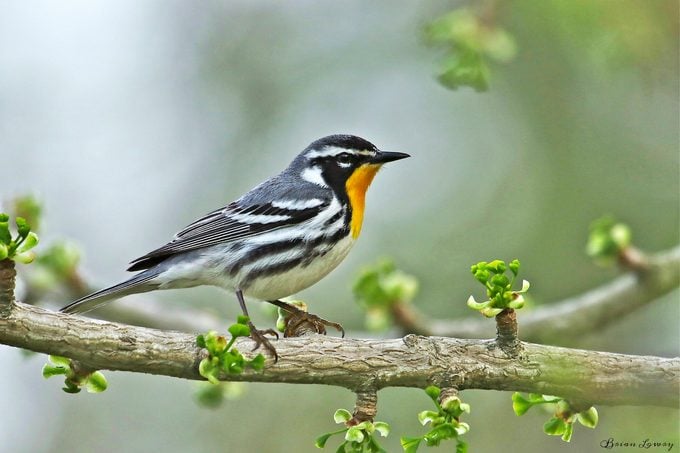
Pin Oak
Quercus palustris, Zones 4 to 8
Size: 60 to 70 feet
A fast-growing oak? You bet! The pin oak’s pyramidal shape and fine branches provide a year-round silhouette in the backyard. The glossy green leaves turn russet, bronze or red in the fall. Though tolerant of most growing conditions, acidic soil is a must.
Why we love it: The pin oak attracts butterflies and hummingbirds, and provides food for the gray hairstreak butterfly and squirrels.
Here’s why you need an oak tree in your backyard.
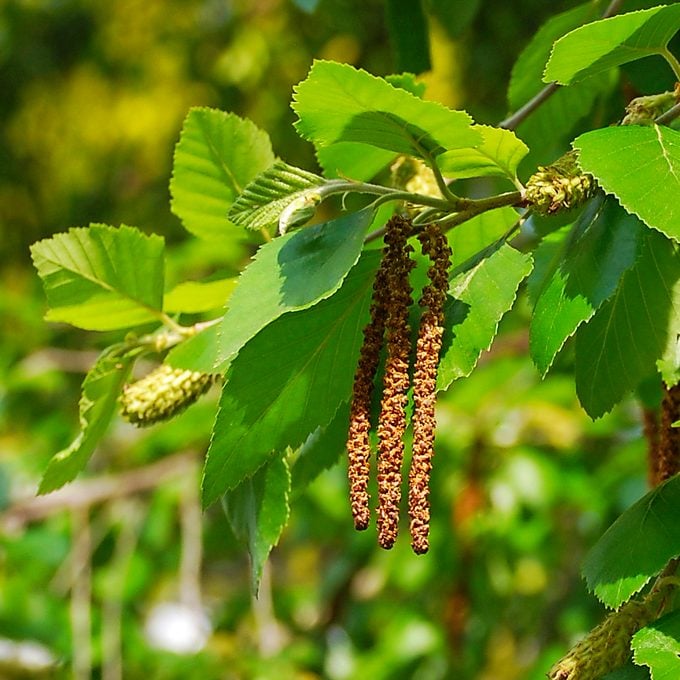
River Birch
Betula nigra, Zones 3 to 9
Size: 40 to 70 feet
The exfoliating bark reveals shades of white, salmon, and brown making this a standout in the landscape. This beauty tolerates both wet and dry soil and is resistant to the bronze birch borer. Look for cultivars like Dura Heat and Heritage; they have more white in their bark and are more heat-tolerant. Grow it in slightly acidic soil for long-lasting results.
Why we love it: The smaller cultivar, Fox Valley (also known as Little King), only grows to 10 to 12 feet and is suitable for smaller landscapes.
Try these dwarf conifers for small spaces.
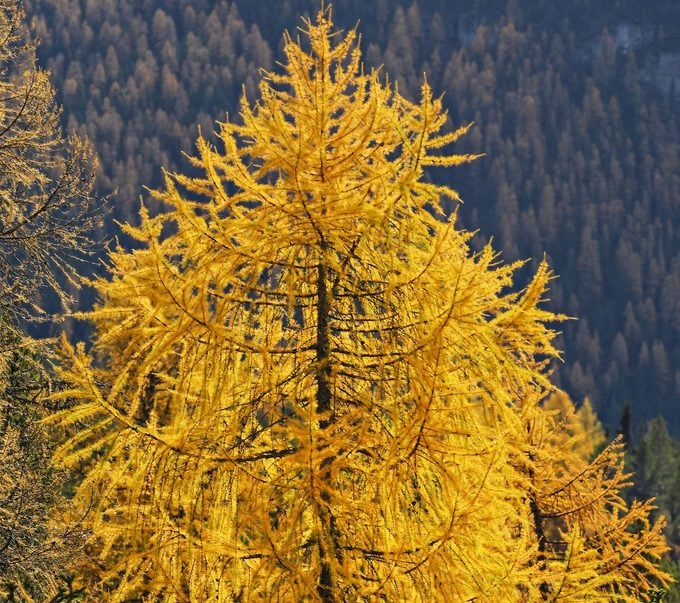
Larch
Larix decidua, Zones 2 to 4
Size: 50 feet or more
Don’t fret when the needles of this conifer tree turn a dazzling yellow-gold in fall. The colorful fall needles will be replaced with fresh new needles each spring. Grow alone or in groups and enjoy the seasonal changes this native tree provides.
Why we love it: The European and Japanese larches allow gardeners with slightly different growing conditions to still enjoy the beauty of this tree.
Get expert hawthorn tree care and growing tips.
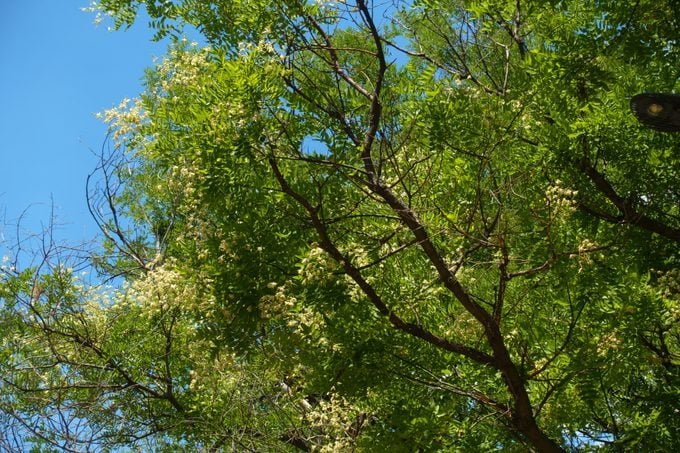
Japanese Pagoda Tree
Styphnolobium japonicum (formerly Sophora japonica), Zones 4 to 7
Size: Up to 50 feet
Also known as scholar-tree, this tree’s bright green foliage and summer bloom make it a nice addition to any landscape. Grow in a mulch bed or mixed border, so the flower petals and ornamental pods will drop out of sight.
Why we love it: The large creamy white flowers are fragrant and brighten the landscape in mid to late summer.
Learn how to grow a tulip poplar tree.
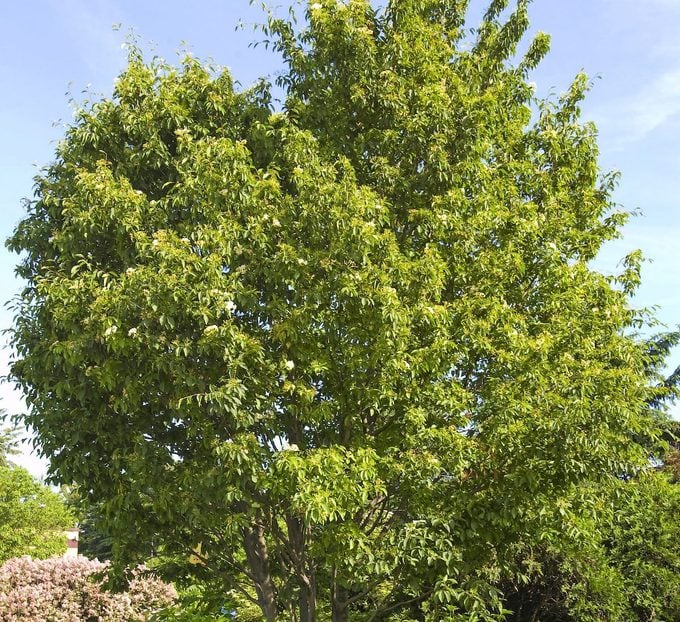
Korean Mountain Ash
Sorbus alnifolia, Zones 4 to 7
Size: 40 to 50 feet
Beautiful white flowers in spring are followed by small pinkish-red to scarlet fruit in the fall. The fruit persists and adds to the fall display as the leaves turn from green to yellow-orange in the fall. Grow in moist, well-drained soil for faster growth and longevity.
Why we love it: Birds love the berries, just like with other mountain ash trees, but this type is more pest-resistant.
More Fast Growing Trees to Grow
And the list goes on! Here are a few more quick growing trees. Make sure the trees you select are hardy in your area, suited to the growing conditions and will fit the available space once mature.
- American linden (Tilia americana)
- Red oak (Quercus rubra)
- Freeman maple (Acer x freemanii)
- Sargent cherry (Prunus sargentii)
- Chinese pistache (Pistacia chinensis)
- Dawn redwood (Metasequoia glyptostroboides)
- American sweetgum (Liquidamber styraciflua)
- Fruitless sweetgum (Liquidamber styraciflua ‘Rotundifolia’)
- Tuliptree (Liriodendron tulipifera)
Sources
Why Trust Us
For nearly 30 years, Birds & Blooms, a Trusted Media Brand, has been inspiring readers to have a lifelong love of birding, gardening and nature. We are the #1 bird and garden magazine in North America and a trusted online resource for over 15 million outdoor enthusiasts annually. Our library of thousands of informative articles and how-tos has been written by trusted journalists and fact-checked by bird and garden experts for accuracy. In addition to our staff of experienced gardeners and bird-watchers, we hire individuals who have years of education and hands-on experience with birding, bird feeding, gardening, butterflies, bugs and more. Learn more about Birds & Blooms, our field editor program, and our submission guidelines.




















